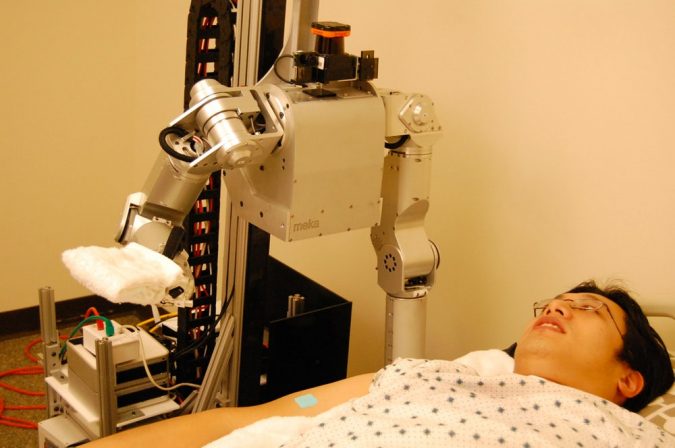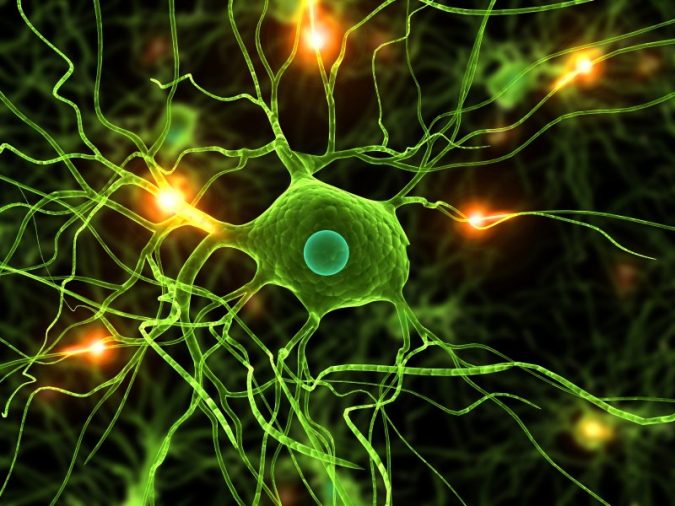
Top 10 Future Technologies in the Medical Field
There are a lot of careers and fields in this world and, of course, all of them have their own importance. However, the field of medicine seems quite vital especially that the lives of many depend on it. And what could be more important or beautiful than saving people’s lives? Above and beyond, the practice and the knowledge of medicine is known to be standardized all around the world and doctors are known to enjoy doing their jobs with a great joy because they know that they are doing something great to the world and to the human race.
Being in the medical field may feel very challenging at a lot of times, but again; healing people is an amazing achievement to strive for and most of the doctors are, as luck would have it, prepared to face these challenges with bravery and cope with them as needed. Moreover, it is true that the lives of doctors are not that easy and stressful, but they come over these negativities by taking pride in being a part of new discoveries concerning medications or technologies; therefore, as a doctor, you are required to be updated with all the new advancement in this field, meaning that your learning journey is never going to stop at some point, for every day there is new discoveries and findings.
Speaking of the new discoveries that the doctors come up with every day, these advancements are very significant to increase the chances of curing more and more patients all around the world. What is more, based on several theories and studies, is that there are always expectations on what may take place in the future in terms of new medical technologies that will help in making the world a better place. Check out this list featuring the top 10 future technologies in the medical field.
10 Virtual Reality
You probably have already heard about the term Virtual Reality, particularly that it has been going viral on the internet and a lot of talks are going on about it. However, you may now be confused about the relation between this new technology and medicine; especially that it has been used for entertainment. Well, since it has become a thriving industry, doctors are looking forward to making this device part of their field. Virtual Reality can be used in medicine by either allowing medical students to gain a realistic experience about the examination of patients or by letting the patients use it to get an insight of what is going to happen to them in certain surgeries. Undergoing a surgery can be stressful enough; however, getting to know what is going to happen during it, as a patient, can ease things a lot.
9 Growing Organs in Labs
Since the beginning of time, a lot of humans have gone through organ failures; as a result, they need new organs to be transplanted for them, but they are probably placed on a waiting list until the right match is found. New technologies are expected to solve this problem by restoring the function of the failed organs or by growing organs in labs. The latter can be done by using the stem cells of the patient to grow an organ that works perfectly for their bodies. The whole idea still sounds surreal for a lot of people, but it is expected to take place anytime soon and that would save more people in a shorter time.
8 Robot Assistants
Yes, Robots have already made a great appearance in sci-fi movies and they have told us several times that the world is expected to be controlled by technology someday soon, but this time, things are getting real. The world is developing rapidly and robots are highly expected to invade the world of medicine to work as assistants which can take care of elder patients as their numbers are increasing on a daily basis. In California, there has been a robot made by a company as a model, designing it to be able to find veins in the patient’s arm and take blood samples out of it. On the other hand, Japan has also created a cartoonish version of this robot shaped as a huge bear to be able to carry patients and move them from one place to another, especially those who are disabled and use wheelchairs. These robots are strong devices that are designed to carry up to almost 450 kilograms and they are specifically made to be used at homes for patients who need assistance.
7 Artificial Cell Mimicry
Since the medical technology is going after creating new organs by using the patient’s stem cells, creating spare parts has become a thing in the medical field. A lot of organs are losing their functions, so they are trying their best to restore them by using a gel that is able to mimic the action of some particular cells. Here is how the process is supposed to go; each cell has its own type of skeleton and it is known as the cytoskeleton which is made up of proteins; the gel is supposed to replace the function of this cytoskeleton inside the cell, healing any damages and restoring the lost ones. Still, fluids will be allowed to pass through the cell to speed up the healing process, but, as luck would have it, the artificial skeleton is capable of blocking the bacteria from passing through with the fluids.
6 Brain Cells from Urine
We know how weird this actually sound, but actually, researchers have found a way of turning the human’s urine into brain cells. This experiment has taken place at the Guangzhou Institute of Biomedicine and Health in China where natural scientists have extracted the cells wasted in urine and used retroviruses to modify them, creating potent cells that are used by the body as the building blocks for the cells of the brain. Although embryonic stem cells were used before and created tumors right after transplant, this method has proven that the created neurons do not cause any tumors. These urine-based cells have also proven to prevent any unwanted mutations from taking place; as a result, scientists are looking forward to using this method for developing neurons for patients by using the urine of the same person, so the cells have higher chances of being accepted by the patient’s body.
5 Augmented Reality
The Augmented Reality is a new technology used to create an image generated by a computer, allowing it to be viewed in the person’s real world, providing a complex view. This method is still going through strong testing, but it is expected to enter the market very soon, for it seems very beneficial for the patients, for it allows the surgeons to see through bodily structures such as blood vessels in a specific organ without having to open it, resulting in a more precise elimination. A clinic located in Germany has already started to attempt the application of the augmented reality on iPads in the OR.
4 Recreational Cyborgs
Cyborgs have already populated science fiction movies, but they are expected to be real and exist in our real world in the near future. These advancements in the medical technology are expected to repair physical drawbacks that, for example, include weak eyesight; above and beyond, it is not only expected to repair it but to also create superpower-like results like providing the vision of an eagle.
3 Food Scanners
Food scanners may have been around for some years now and that includes brands like Scio and Tellspec. This is actually great news for everyone out there who is trying to watch what they put into their bodies, especially if they are trying to lose or gain weight. Above and beyond, it is going to be of a great benefit to those who suffer from allergies, so they will be able to identify whether a certain type of food will be dangerous for them or not.
As luck would have it, this product has been more available than before and it has also helped a lot of people to watch the amount of salt and sugar that they consume. These scanners give you a detailed insight into the food composition in terms of calories, nutrients, and even its value and that could be easily done by using your smartphone.
2 Digital Diagnostics
Since health care could be a burden for those who are not able to easily move and visit a doctor, digital diagnostics have been taking place to make things easier for elders and disabled people. There has been one device of this digital diagnostics that is already out there and it is the Neurotrack. This device can be used for testing and diagnose Alzheimer; it detects the damages that may occur on the hippocampus- the first part of the brain that is usually affected by this disease- and evaluate the movement of the eye.
1 Electronic Aspirin
A lot of people have been suffering from chronic forms of a headache and they have been advised to take two aspirins by most of the doctors, but this method has turned out to be useless and it only works in the short term. For that reason, a clinical investigation has been performed on a technology that is used for blocking the signals that identify the occurrence of a headache. The system involves implanting a small nerve permanently that’s function is to stimulate the device located in the upper gum on the side of the head that gets affected by a headache. The tip of the implant gets connected with the nerve bundles, so when the patient starts sensing the beginning of a headache, they place an RC on the cheek that is nearer to the implant; this will result in blocking the neurotransmitters that cause the pain in the first place.
Thanks to the rapid advances taking place in the medical field, the world can become a better place in the near future, saving more patients than ever.




















